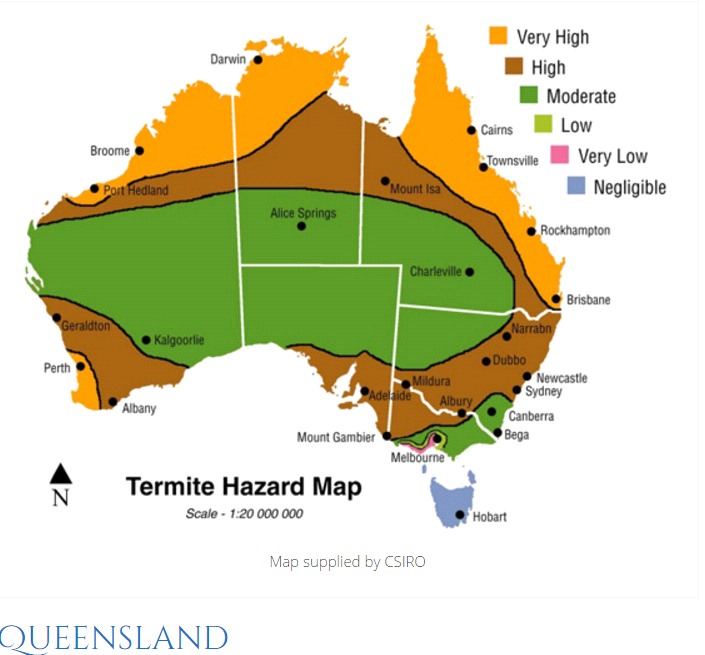Are you concerned about a termite infestation in your home? Well you’re not alone as termites attack one in every three homes every year in Australia which is an alarming statistic. Damage caused by termites comes at a cost in the millions of dollars. In 2015 alone, this figure came to $910,000,000 in termite damage. That is frightening, as it is way higher than the damage brought about by floods, fires and storms put together.
Below you’ll find information about the three main types of termites and how much damage they can do. Here’s a sneak-peak into the most destructive ones.

Subterranean Termites
More than 2 million termites can be found in a subterranean termite colony. Workers, reproducers and soldiers are the three types of termites found in such a colony.
Size – 1/8” to 1”
Shape – Oval, long, narrow
Color – Cream, Brown
Legs – 6
Wings – Yes
Antenna – Yes
Diet – Wallpaper, wood, plastics and fabrics made out of plants.
Habitat – Subterranean termites will need contact with soil to survive. These termites live in underground colonies or in wet areas above the ground. Tunnels are built to reach food. Every spring, groups of termites fly off to start new colonies.
Impact – The most destructive form of termites, the subterranean ones, can cause extensive damage by eating up a lot of wood. These termites can destroy foundations of buildings, plastic plumbing pipes, wooden support beams, sub-flooring, insulation, filtration systems as well as swimming pool liners.
Prevention
- Don’t let water build up around the foundation of your home. Termites love these conditions!
- Make sure the water drains away from your house.
- Never leave wood scraps in the yard, they love feasting on them.
- Replace any damaged or damp wood on the outside of your home.
Damp-wood Termites
Damp-wood termites are normally larger in size than all the other termites. The young termites in these colonies do all the work for the colony.
Size – ½” to 5/8”
Shape – Narrow, long, oval
Color – Brown
Legs – 6
Wings – Yes
Antenna – Yes
Diet— Moist wood
Habitat – They live in damp drying wood or in houses that have plumbing leaks which keep the wood wet.
Impact – These termites do not carry disease and are mostly found in damp wood only.
Prevention
- Replace any damp or damaged wood.
- In order to avoid damp-wood termites, ensure the water drains away from your homes.
Formosan Termites
Measuring up to 300 feet, these colonies can have thousands of termites in a single colony. Reproducing ones, soldiers and workers come together to make this colony. These happen to be the largest (the monsters of their community) and the most destructive ones.
Size – 1/2”
Shape – Narrow, long, oval
Color – Yellowish brown
Legs – 6
Wings — Yes
Antenna – Yes
Diet – These termites eat fabric and wood made from plants. When eating dead trees, these termites help the environment by making way for new life.
Habitat – These termites live in underground colonies, building mud nests inside the walls of a building or even a boat.
Impact – Eating up a lot of wood, they can do terrible damage to your homes.
Prevention
- Replace all damp or damaged wood in the exteriors of your home
- Make sure water drains away from your house
- Wood that sounds hollow when tapped, bubbling paint and mud tubes can be other signs of termite infestations in your home.
A study conducted in 1996-98 by the CSIRO shows varying incidences of termite infestations of the colonies of Queensland. Depending on your location in Queensland, the likelihood of termite infestation was about 10% -40%. The coastal strip from the Sunshine Coast to the Southern NSW Coast showed a more moderate level of about 20% – 30% of the dwellings. This means that one in five houses or one in three older houses can be sheltering these fast-breeding termite colonies.
